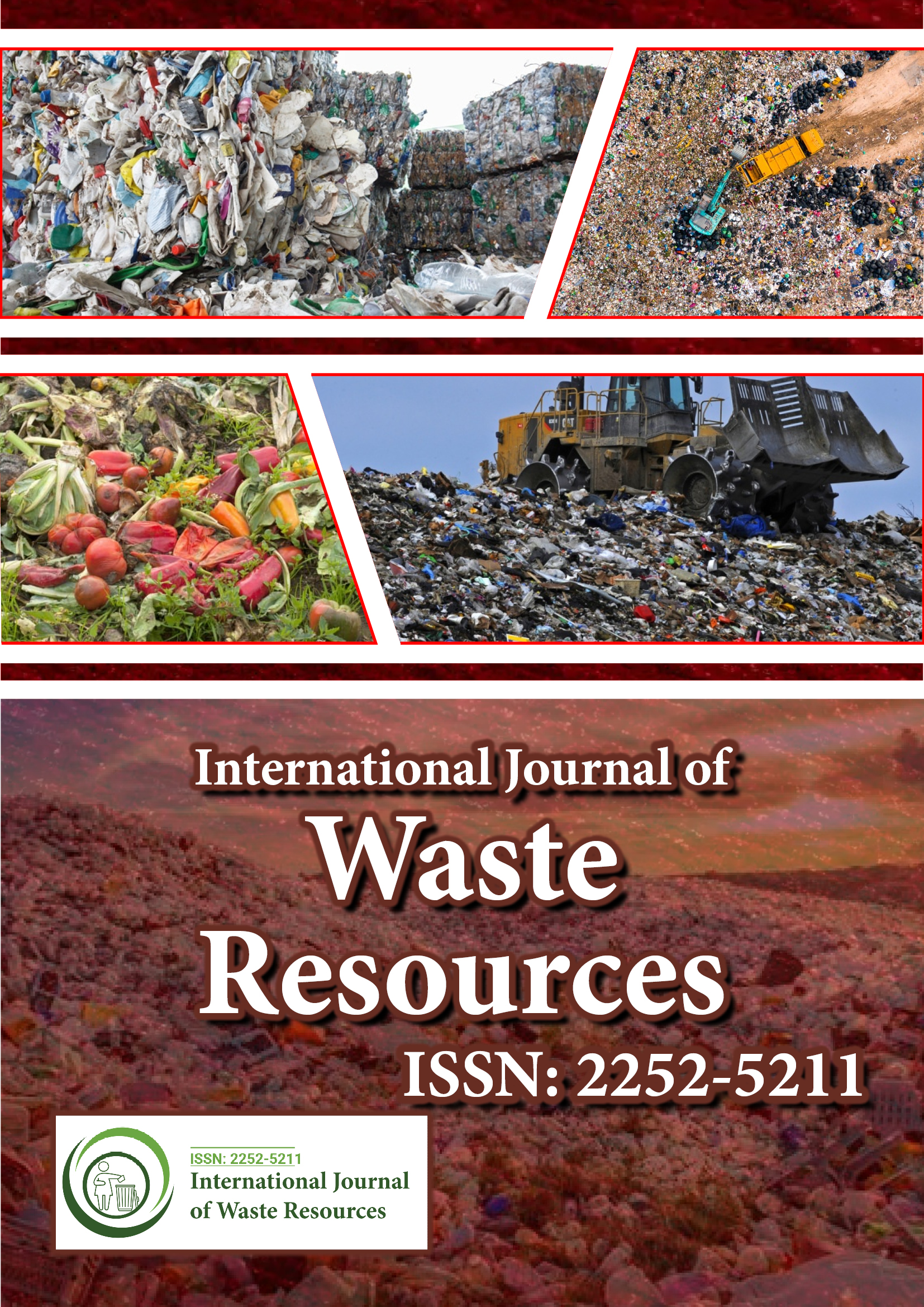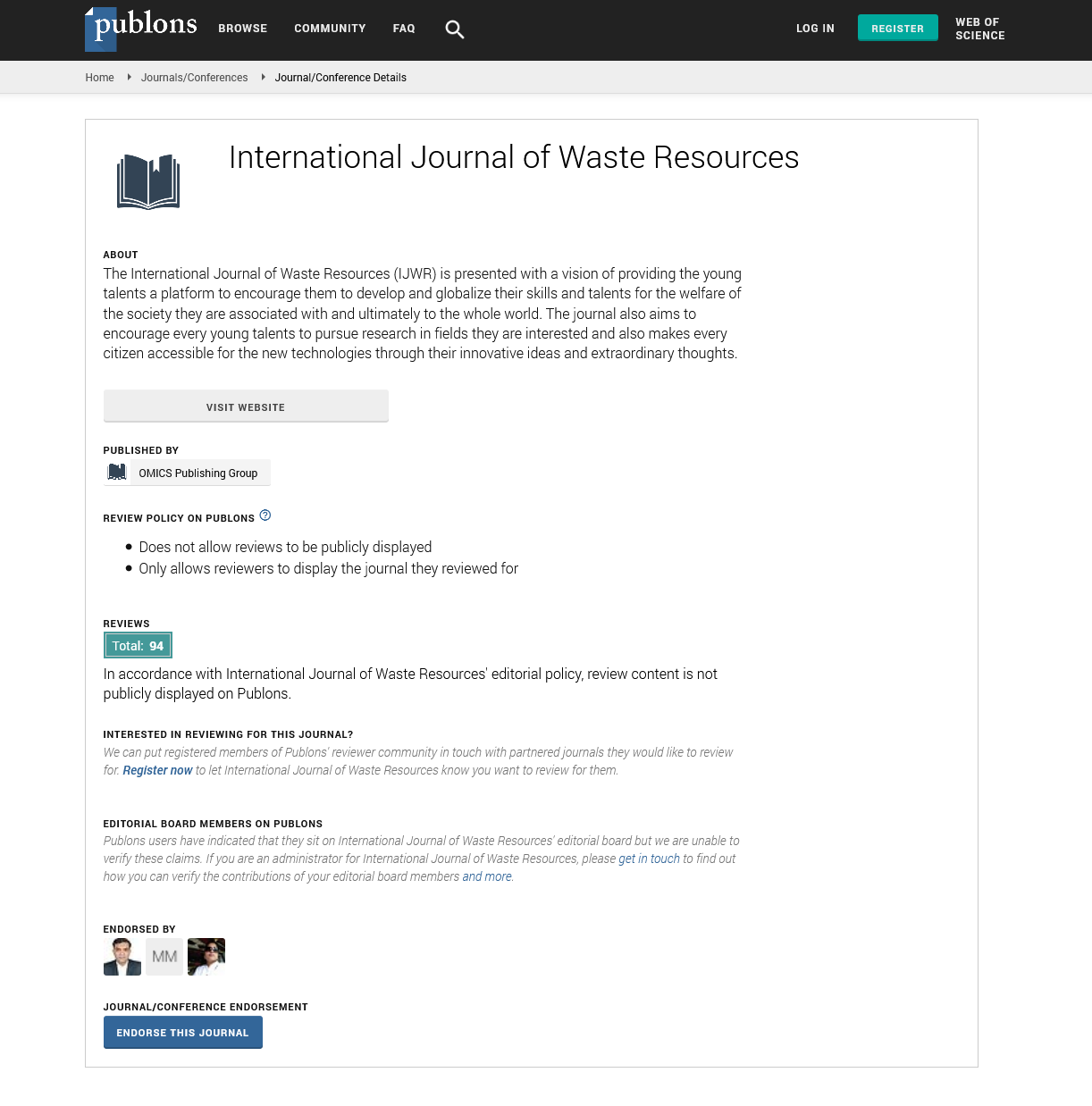PMC/PubMed Indexed Articles
Indexed In
- Open J Gate
- The Global Impact Factor (GIF)
- Open Archive Initiative
- VieSearch
- International Society of Universal Research in Sciences
- China National Knowledge Infrastructure (CNKI)
- CiteFactor
- Scimago
- Ulrich's Periodicals Directory
- Electronic Journals Library
- RefSeek
- Directory of Research Journal Indexing (DRJI)
- Hamdard University
- EBSCO A-Z
- Publons
- Google Scholar
Useful Links
Share This Page
Journal Flyer

Open Access Journals
- Agri and Aquaculture
- Biochemistry
- Bioinformatics & Systems Biology
- Business & Management
- Chemistry
- Clinical Sciences
- Engineering
- Food & Nutrition
- General Science
- Genetics & Molecular Biology
- Immunology & Microbiology
- Medical Sciences
- Neuroscience & Psychology
- Nursing & Health Care
- Pharmaceutical Sciences
Perspective - (2024) Volume 14, Issue 2
Circular Economy Models for End-of-Life Vehicle (ELV) Recycling: Environmental Impact and Resource Recovery
Received: 22-May-2024, Manuscript No. IJWR-24-26711; Editor assigned: 24-May-2024, Pre QC No. IJWR-24-26711(PQ); Reviewed: 14-Jun-2024, QC No. IJWR-24-26711; Revised: 21-Jun-2024, Manuscript No. IJWR-24-26711(R); Published: 28-Jun-2024, DOI: 10.35248/2252-5211.24.14.577
Description
Circular economy models for End-of-Life Vehicle (ELV) recycling represent a progressive approach to managing automotive waste. These models focus on maximizing resource recovery and minimizing environmental impact by transforming waste from decommissioned vehicles into valuable materials. By adopting circular economy principles, the automotive industry can enhance sustainability, reduce waste, and conserve resources throughout the lifecycle of vehicles. The conventional approach to ELV management often involves dismantling and shredding vehicles to recover valuable parts and materials. However, this method can lead to significant environmental issues, including the release of hazardous substances and inefficient resource utilization. Circular economy models address these problems by emphasizing the continuous use of materials and components, thereby reducing waste and promoting sustainable practices.
One of the key aspects of circular economy models is the recovery and reuse of materials from end-of-life vehicles. Automobiles are composed of a diverse range of materials, including metals, plastics, glass, and rubber. By implementing advanced recycling technologies and processes, it is possible to recover these materials more efficiently. For instance, metals such as steel, aluminum, and copper can be separated, cleaned, and processed for reuse in new products. Plastics and rubber can be processed into raw materials for manufacturing, while glass can be recycled into new automotive glass or other products. This approach not only reduces the need for new materials but also lowers the environmental impact associated with mining and manufacturing. Additionally, circular economy models focus on extending the lifespan of vehicle components through remanufacturing and refurbishment. Many parts from end-of-life vehicles, such as engines, transmissions, and electronic components, can be refurbished and reused in new vehicles or other applications. This process involves disassembling, cleaning, repairing, and testing components to ensure they meet performance standards. By extending the life of these parts, the demand for new components is reduced, and the overall environmental footprint of vehicle production is diminished.
Environmental impact is a major consideration in circular economy models for ELV recycling. Traditional disposal methods for end-of-life vehicles often lead to the release of hazardous substances, such as lead, mercury, and PCBs, which can contaminate soil and water. Circular economy models prioritize the safe handling and disposal of these hazardous materials. For example, specialized facilities can be used to remove and properly dispose of toxic substances before the vehicle is dismantled. Advanced technologies can also be employed to treat and neutralize hazardous waste, ensuring that environmental risks are minimized. Manufacturers can design vehicles using materials that are easier to recycle and assemble with modular components that can be easily replaced or refurbished. By incorporating these design principles, the end-oflife vehicle recycling process becomes more efficient, and the environmental impact is further reduced. Design for disassembly and recyclability can also facilitate the separation of different materials and components, leading to higher quality and more valuable recycled materials.
The economic benefits of circular economy models in ELV recycling are substantial. By recovering valuable materials and components, the automotive industry can reduce costs associated with raw material procurement and waste management. The sale of recovered materials can generate revenue, which can be reinvested into further recycling and sustainability initiatives. Circular economy models also encourage collaboration among stakeholders in the automotive industry, including manufacturers, recyclers, and policymakers. Effective implementation of these models requires coordination and communication between different parties to ensure that materials are efficiently recovered and reused. Policymakers can support circular economy practices through regulations and incentives that promote recycling, resource recovery, and sustainable vehicle design.
Conclusion
In conclusion, circular economy models for end-of-life vehicle recycling offer a sustainable approach to managing automotive waste. By focusing on resource recovery, extending the lifespan of components, and minimizing environmental impact, these models contribute to a more efficient and environmentally responsible recycling process. The adoption of circular economy principles not only benefits the environment but also provides economic advantages and supports the development of a more sustainable automotive industry. As the demand for sustainable practices continues to grow, circular economy models will play a key role in shaping the future of ELV recycling and resource management.
Citation: Zbysek N (2024). Circular Economy Models for End-of-Life Vehicle (ELV) Recycling: Environmental Impact and Resource Recovery. Int J Waste Resour. 14:577.
Copyright: © 2024 Zbysek N. This is an open-access article distributed under the terms of the Creative Commons Attribution License, which permits unrestricted use, distribution, and reproduction in any medium, provided the original author and source are credited.

